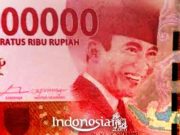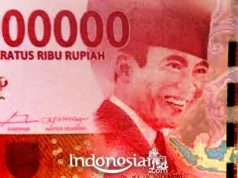The use of the Palawa script as part of the script in Javanese culture in Indonesia begins with the story of Aji Saka, which is truly a unique myth that is rarely second to none. This particular myth can not only be a folkore telling the story of cultural evolution, more than that it has been phonetically constructed as a symbol of letters that facilitates the literacy process in society (Javanese Literacy Myths, indonesia.go.id).
Heddy Shri Ahimsa-Putra (2016) in Ha-Na-Ca-Ra-Ka Aji Saka, Myth of Literacy, Myth of Civilization, sees the final fragment of Aji Saka’s story as a phase of civilization in Javanese culture. This phase is marked by the recognition of literacy culture. Unfortunately, Ahimsa did not focus on time-consuming. This is certainly understandable. The structuralism approach based on Ahimsa’s thought tends to be antihistorical.
Even though Ahimsa’s article does not mention the name Levi-Strauss, anyone who follows the ideas of the UGM Anthropology Professor will definitely appreciate it. He is an exponent who carries the tradition of structuralism thought brought by this great thinker from France.
Meanwhile, Levi-Strauss himself is a critic of the methodology of historicism. Naturally, that’s why Ahimsa didn’t reveal the historical aspects of the legend of Aji Saka. So, to answer the question of who Aji Saka is, is a challenge in itself.
Who really is Aji Saka? Is it a historical figure or a fiction. If it is a historical figure, is Aji Saka a foreigner or native to Java? If he is just an imaginary figure, what is the meaning behind the legend that is so popular?
An equally complex problem is tracing the period in which Aji Saka’s narrative began to live in the community. It should be suspected that initially this narrative was part of oral literature or the oral tradition. Passed down from generation to generation. It was only in historical developments that this narrative began to be transcribed into text in lontars.
The question is, so far the oldest version of Aji Saka’s text inscription is from what year?
In addition, what is no less interesting is finding out since when the Ha-Na-Ca-Ra-Ka script, or also popularly known as “Carakan”, began to be used in Javanese literary writing.
We depart from the facts. Only then do the folklore, legend, or myth aspects of Aji Saka’s narrative try to compile, read, and reinterpret the facts based on facts.
So the point of departure for the facts is the study of paleography, a science that examines the development of ancient writing. In Indonesia, the pioneer of paleographic studies is AB Cohen Stuart, who published his work Kawi Oorkonden in Fasimile, Mer Inleiding en Transcriptie.
Then followed by Holle, Kern, Casparis, Krom, Brandes, Stutterheim, Poebtjaraka, Buchari, and others, so paleographic studies in Indonesia certainly seem to be growing. It’s just that because our focus is on historical history, it is sufficient for us to look at Casparis’ research, and later from our philological discipline we will then enter Zoetmulder’s research.
Based on inscription research from the findings of inscriptions and ancient manuscripts in the archipelago, Professor JG de Casparis (1975) in Indonesian Palaeography: A History of Writing in Indonesia from the Beginnings to C. A.D. 1500 states, characters have been known by the people of the archipelago for at least fifteen hundred years ago. He divided the development of the Javanese script into five historical periods.
Step back in early AD as an early or first period. This phase lasted until entering the middle of the eighth century. At that time, the early and late Palawa characters were the means of writing for the people of Nusantara, including the Javanese.
At that time the people in Indonesia fully adopted the Palawa script and the Sanskrit language in writing official inscriptions. Examples can be seen from the Kutai Inscription from the 4th century AD, the Tarumanegara Inscription (West Java), the early moments of the Sriwijaya Inscription, to the Canggal Inscription (Central Java) in the early 8th century.
The second period is the Early Kawi script. Ranging between 750 – 925 AD As we know, the term Kawi is synonymous with the term “Old Javanese”. The mention of Old Javanese as the equivalent of Kawi was pioneered by NJ Krom. In this way, the term Kawi Awal in the Casparis play is also synonymous with the term Early Old Javanese.
If this period is broken down, it is possible to distinguish between the Ancient Phase forms and the discovery of the early Kawi script standard. Examples can be seen in the inscriptions written on the Plumpungan inscription, the Dinoyo inscription, the Balitung inscription, and the inscriptions written along 910 – 925 AD.
The third period, namely the Late Kawi script or Late Old Javanese. Ranging from 925 – 1250 AD This phase includes inscriptions throughout the early era of the Medhangkamulan kingdom in East Java (910 – 947 AD); during the reign of King Airlangga (1019 – 1042 AD); also still appeared in the era of the Kingdom of Kediri (1100 – 1220 AD).
The fourth period, which is easy to call it by the name of the script “Jawa Majapahit”. Casparis himself categorized this period as “Javanese script and several regional scripts in the Majapahit period”. Ranging between 1250 – 1450 AD In this phase, Javanese script in the Majapahit era was far different from the Palawa script as its parent.
Examples can be seen in the inscriptions written in the Kudadu Inscription in Mojokerto, the Adan-adan Inscription in Bojonegoro, and the Singhasari Inscription in Malang, and others.
The fifth period, namely the Javanese script from the middle of the 15th century AD until now. People often refer to this period as a script style from the New Java or Modern Java era.
From the existence of this historical biography, it can immediately be seen that the Javanese script as we know it today did not form immediately, but it also underwent a history of its evolutionary development and formation.
That is, speaking in a simplistic and generalist manner about Javanese script, so far it can be concluded historically: Starting from the Palawa script, Early Old Javanese, Late Old Javanese, Javanese Majapahit, until then it develops into the Ha-Na-Ca-Ra-Ka script or Get it.
Casparis underlines, this “new” Javanese script, gradually emerged from the Kawi script at the turn of the 14th to 15th centuries AD, when the Land of Java began to receive significant Islamic influence.
Not much different is the conclusion of Professor PJ Zoetmulder. It’s just that Romo Zoetmulder in Kalangwan – Old Javanese Literature, Selayang Pandang (1973), divides the development of Javanese script – or more precisely “Javanese literature” – into three rather than five periods, namely: Old Java, Middle Java and Modern Java.
According to Zoetmulder, if a literary work in the Old Javanese era has the characteristics of using an Indian a-la meter which is commonly called kakawin, then literature in the Middle Javanese era has the characteristics of the original Javanese meter or kidung.
Furthermore, according to Zoetmulder, the vocabulary of these two types of Javanese literature can be said to be dominated by the absorption of words from Sanskrit and the strong influence of Indian culture. Quoting J Gonda’s estimate in Sanskrit in Indonesia, Zoetmulder noted that Old Javanese poetry which was composed following the Indian-style metrum, kakawin, contained approximately 25-30 percent of the unity of words originating from Sanskrit.
Meanwhile, the characteristics of literature in the era of New Java or Modern Java, according to Zoetmulder, are marked by the dominance of vocabulary absorption elements from Arabic and the strong influence of Islamic culture.
From Zoetmulder’s very rich description, an important point relevant to this discussion is the historical starting point of the birth of the Old Javanese script itself. This is important to review because, whether directly or indirectly, it will be related to the myth of Aji Saka.
Again, Zoetmulder does not mention this as a milestone in the emergence of Javanese script. More broadly than that, Zoetmulder chose to call it a milestone that started the history of “Old Javanese” or “Old Javanese literature.”
The question is: since when has the appearance of Old Javanese language been chronologically recorded in history? What is the starting point of the mailstones of Old Javanese literature?
The starting point is that a Saka inscription was found: 726 S.
Yes, early ninth century. Such is the importance of the title, because according to Zoetmulder this inscription is the first charter to use Old Javanese script and language. And since that date, month and year Old Javanese is always used in most official writings.
Of course there are many inscriptions that are much older in age. However, prior inscriptions were always written in Sanskrit, either through the Palawa script or Old Javanese, but not yet written in Old Javanese.
Unfortunately, the Sukabumi Inscription is not a declaration about the arrival of the character Aji Saka. This official record does not talk about Medang Kamulan, it is said that the name of the country where Aji Saka reigned in Java.
Meanwhile, the term ‘Medang’, without the affixed word ‘Kamulan’, was also noted to have appeared long ago in the era of the Sanjaya House. For example, it is written in the Mantyasih inscription, numbered 907 AD. There is a gap of more than a hundred years from when the Sukabumi inscription was written, 804 AD.
It must be admitted that it is not easy to find a common thread for historical correlation, between archaeological or paleographic facts on the one hand and inscriptions of the old manuscripts of Aji Saka on the other.
Unfortunately again, due to limited space, various interpretations of the symbolic or mythological aspects of Aji Saka’s narrative and how they correlate with historical facts that are either directly or indirectly reflected in various ancient inscriptions will be written in a separate article. Come on, get interesting information from Indonesiar.com.































